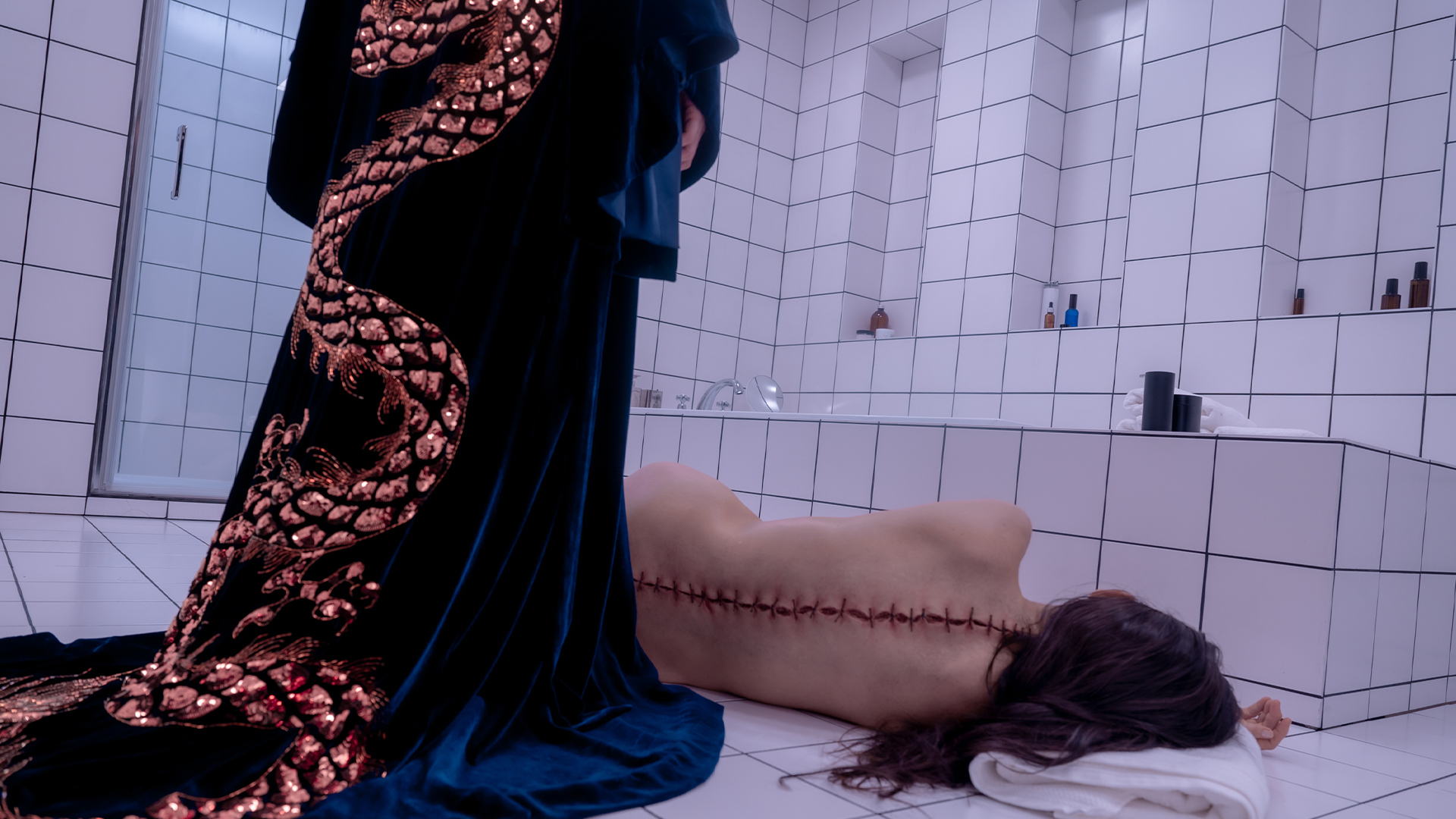Body horror The Substance desperately wants modern cult status

Demi Moore and Margaret Qualley star in perverse Hollywood tale The Substance. Rory Doherty caught the film at Cannes, but was far from won over.
Seven years after making waves with her desert-set rape-revenge thriller Revenge, French director Coralie Fargeat expands her exploitation cinema tastes with The Substance, a body horror that moves past the sly, droll pleasures of Cronenberg’s The Fly into the cartoonish and graphic realm of Frank Henenlotter. Set in a garish Hollywood, celebrity Elizabeth Sparkle (Demi Moore) has lost her value to sexist suits and is ousted from her daytime television exercise show, triggering anxieties about being an ageing woman in an uncompromising, regressive industry.
Desperate, Elizabeth is led to a covert medical innovation called only “The Substance”. Through an opaque instruction video, she learns of its Faustian promise: inject yourself with The Substance, and you will create a younger, fitter version of yourself (played by Margaret Qualley), who will live a week in your place as you sleep, and who needs to feed off your lifeforce. The younger body will then rest for a week while you roam free, and then you switch again—with the caveat that you both are still the same person, and whatever harm is done to one body will affect the other.
Like Revenge, Fargeat attempts to reorientate the perverse gratification that usually comes with the cult genre she’s exploring, implicating the audience in who we’ve historically enjoyed being the subject of exploitation cinema’s gaze while underlining the subversive potential of the genre. But like Revenge, Fargeat’s intent has more clarity than her execution. Revenge at least succeeds as a nitro-fuelled suspense ride; The Substance only succeeds in overstressing the thinnest of observations with numbingly obvious craft. It considers the audience unable to grasp its simplest points, but desperately wants them to grant it modern cult status, and compensates with a volume of splatterific practical FX that sometimes feels misguidedly deployed.

After being born fully formed from Elizabeth’s spine in the first of many explicit and commendable effects scenes, the young double, who names herself “Sue”, immediately tries to recapture former glories at the network who dishonourably discharged her—not because she wants to get revenge on the suits that mistreated her, rather because she sees their validation as genuinely valuable. This is one of the first signs that Elizabeth and Sue don’t meaningfully share a consciousness, and while their opposing values and goals provide a good deal of conflict as each wars for control over their own flesh, the choice to not define their relationship with a horror-tinged intimacy and proximity proves near fatal for The Substance’s body horror ambitions.
From the lascivious close-ups of network executive Harvey (Dennis Quaid) devouring shellfish to the glossy music-video-esque close-ups of Sue dressed in spandex, The Substance eschews subtlety at every juncture, ostensibly so the visual language has the maximum impact on the viewer. But style can only leave an impact if it is fused with intent, and The Substance’s unwillingness to uncover beneath-the-surface critiques of fetishising youth, resenting your own worthlessness, and craving validation from powerful misogynists means that Fargeat treats the audience as if they’ve never encountered these ideas before, so they have to be hammered home across 140 minutes.
There’s also the fact that The Substance looks and feels like none of the films it’s emulating—as in, actual cult films. There’s a completely artificial feeling to the production design—no doubt an intentional choice to convey just how constructed a world Elizabeth exists in. To The Substance’s credit, it’s not flat-out ineffective: Elizabeth’s apartment has a vacant showroom vibe contrasted by a sterile, white-tiled bathroom, which are perfect contrasting environments to host messed-up self-surgery and decomposition.
But some choices raise questions: one of Elizabeth’s decorations is an enormous framed picture of her younger self, but the film is unwilling to interrogate the nuance of Elizabeth’s narcissism meshing with conforming to an industry standard. This cartoonish style also infects the performances and cinematography—the fish-eyed lenses and sitcom-coded male characters, including a neighbour and school chum, off-balance the grit and nastiness we get from the blood and gore, making the film feel like it takes place in the heightened and nauseating world of Mike Myers’ The Cat in the Hat.

The gravest consequence of making a film that only cares about surface is that Elizabeth and Sue feel like separate, disconnected entities for nearly all of the film. Moore and Qualley do what they can with inane direction, but their characters only see each other adversarially, an entity to work around rather than empathise with or be influenced by. Fargeat wants to subvert the perspective of body horror without replicating the greatest asset of the genre: that which we consider abject is also tangibly, tactilely intimate.
The Fly and Brain Damage aren’t just films we gawk at, they’re films we feel, and they understand how radical it is to connect with the grotesque. The last 20 minutes of The Substance goes full Toxic Avenger meets Society, a shriek-inducing rampage of perversity, but also tries to channel the pathos of Carrie and The Elephant Man while gawking at growths and excretions. It doesn’t work, precisely because Fargeat has not convinced us how The Substance regards the bodies that populate the film.
Originally published by Flicks on July 31, 2024



















